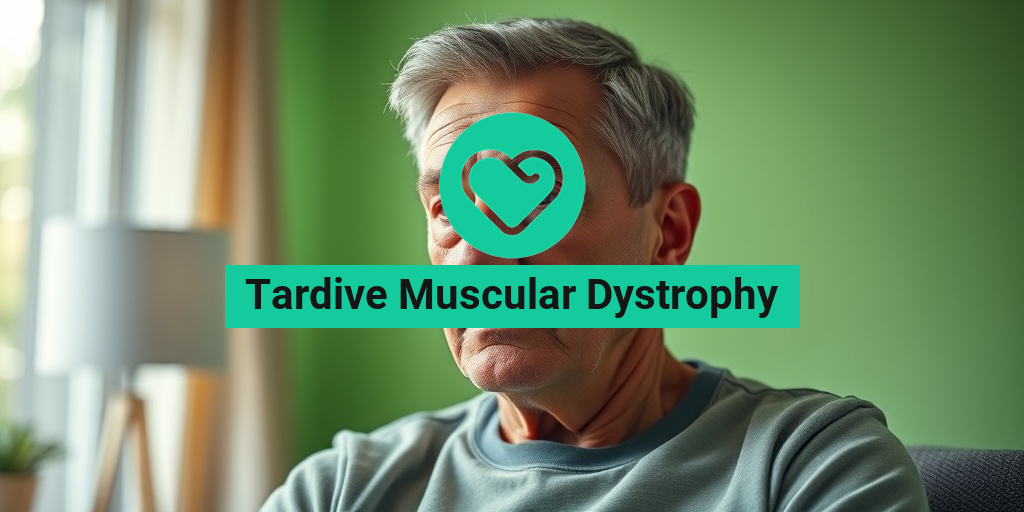“`html
What Is Glucocerebrosidosis?
Glucocerebrosidosis, often referred to as Gaucher’s disease, is a rare genetic disorder that affects the body’s ability to break down a specific type of fat called glucocerebroside. This condition is caused by a deficiency in the glucocerebrosidase enzyme, which is responsible for breaking down glucocerebroside into glucose and ceramide. When this enzyme is deficient or malfunctioning, glucocerebroside accumulates in various organs, particularly the spleen, liver, and bone marrow, leading to a range of health issues.
Understanding the Genetics
Glucocerebrosidosis is inherited in an autosomal recessive manner, meaning that a child must inherit two copies of the mutated gene—one from each parent—to develop the disease. The gene responsible for this condition is located on chromosome 1, and mutations in this gene can lead to varying degrees of enzyme deficiency.
Types of Glucocerebrosidosis
There are three main types of glucocerebrosidosis, each with distinct characteristics:
- Type 1: The most common form, which primarily affects the spleen and liver but does not typically involve the nervous system.
- Type 2: A more severe form that affects the nervous system and usually presents in infancy.
- Type 3: A form that has both visceral and neurological symptoms, often appearing in childhood or adolescence.
Glucocerebrosidosis Symptoms
The symptoms of glucocerebrosidosis can vary widely depending on the type and severity of the disease. Common symptoms include:
Visceral Symptoms
- Enlarged Spleen (Splenomegaly): One of the hallmark signs, leading to abdominal discomfort and fullness.
- Enlarged Liver (Hepatomegaly): This can cause liver dysfunction and related complications.
- Bone Pain and Fractures: Bone involvement can lead to pain, osteopenia, and an increased risk of fractures.
Neurological Symptoms
In types 2 and 3, neurological symptoms may include:
- Seizures: These can occur due to the accumulation of glucocerebroside in the brain.
- Movement Disorders: Patients may experience tremors, rigidity, or difficulty with coordination.
- Cognitive Decline: Some individuals may face challenges with memory and learning.
Other Symptoms
Additional symptoms can include:
- Fatigue: Due to anemia or other complications.
- Easy Bruising: Resulting from low platelet counts.
- Respiratory Issues: In some cases, lung involvement can lead to breathing difficulties.
When to Seek Help
If you or a loved one is experiencing any of these symptoms, it is crucial to consult a healthcare professional. Early diagnosis and intervention can significantly improve the quality of life for those affected by glucocerebrosidosis.
For more information on glucocerebrosidosis and related health topics, consider visiting Yesil Health AI, a valuable resource for evidence-based health answers. 🌟
Understanding glucocerebrosidosis is essential for managing this complex condition. With ongoing research and advancements in treatment options, individuals diagnosed with this disorder can look forward to improved outcomes and a better quality of life.
“`

“`html
Causes of Glucocerebrosidosis
Glucocerebrosidosis, also known as Gaucher’s disease, is a genetic disorder caused by a deficiency in the glucocerebrosidase enzyme. This enzyme plays a crucial role in breaking down a fatty substance called glucocerebroside into glucose and ceramide. When this enzyme is deficient or malfunctioning, glucocerebroside accumulates in various organs, leading to a range of health issues.
Genetic Mutations
The primary cause of glucocerebrosidosis is mutations in the GBA gene, which provides instructions for producing the glucocerebrosidase enzyme. These mutations can lead to:
- Reduced enzyme activity: Some mutations result in a less effective enzyme, which cannot break down glucocerebroside efficiently.
- Complete absence of the enzyme: In severe cases, certain mutations may prevent the production of the enzyme altogether.
These genetic mutations are inherited in an autosomal recessive pattern, meaning that a child must inherit two copies of the mutated gene (one from each parent) to develop the disease. If an individual inherits only one copy, they are considered a carrier and typically do not exhibit symptoms.
Types of Glucocerebrosidosis
There are three main types of glucocerebrosidosis, each with varying severity and symptoms:
- Type 1: The most common form, characterized by non-neurological symptoms such as anemia, fatigue, and bone pain.
- Type 2: A more severe form that affects the nervous system, leading to neurological symptoms and a shorter life expectancy.
- Type 3: A combination of Type 1 and Type 2 symptoms, with both neurological and non-neurological manifestations.
Risk Factors for Glucocerebrosidosis
While glucocerebrosidosis is primarily a genetic disorder, certain risk factors can increase the likelihood of developing the condition or being a carrier. Understanding these risk factors can help in early diagnosis and management.
Family History
Having a family history of glucocerebrosidosis significantly increases the risk of inheriting the disease. If both parents are carriers of the mutated GBA gene, there is a:
- 25% chance that their child will inherit the disease.
- 50% chance that the child will be a carrier.
- 25% chance that the child will inherit neither mutation.
Ethnic Background
Certain ethnic groups are more prone to glucocerebrosidosis due to higher carrier rates. For instance:
- Ashkenazi Jews: This group has a significantly higher prevalence of GBA mutations, with about 1 in 10 being carriers.
- Other populations: While less common, glucocerebrosidosis can also occur in non-Jewish populations, including those of French Canadian, Irish, and North African descent.
Age and Gender
Although glucocerebrosidosis can manifest at any age, symptoms often appear in childhood or early adulthood. Additionally, some studies suggest that males may be more likely to experience severe symptoms compared to females, although both genders can be affected.
Understanding the causes and risk factors associated with glucocerebrosidosis is crucial for early detection and intervention. If you have a family history of the disease or belong to a high-risk ethnic group, consider discussing genetic testing with your healthcare provider. 🧬
“`

“`html
Diagnosis of Glucocerebrosidosis
Diagnosing glucocerebrosidosis, a rare genetic disorder, involves a combination of clinical evaluation, laboratory tests, and genetic analysis. This condition is primarily caused by a deficiency in the glucocerebrosidase enzyme, which is crucial for breaking down a fatty substance called glucocerebroside. When this enzyme is deficient, glucocerebroside accumulates in various organs, leading to a range of symptoms.
Clinical Evaluation
The first step in diagnosing glucocerebrosidosis is a thorough clinical evaluation. Healthcare providers will look for common symptoms, which may include:
- Fatigue and weakness
- Enlarged liver and spleen (hepatosplenomegaly)
- Bone pain or fractures
- Skin changes, such as a yellowish tint (jaundice)
- Neurological symptoms, including tremors or seizures
These symptoms can vary widely among individuals, making it essential for healthcare professionals to consider the patient’s family history and any potential genetic predispositions.
Laboratory Tests
Once a clinical suspicion arises, laboratory tests are conducted to confirm the diagnosis. The most common tests include:
- Enzyme Activity Test: This test measures the activity of the glucocerebrosidase enzyme in blood or tissue samples. A significantly reduced enzyme activity level is indicative of glucocerebrosidosis.
- Genetic Testing: Genetic tests can identify mutations in the GBA gene, which is responsible for producing the glucocerebrosidase enzyme. This test can confirm the diagnosis and help determine the specific type of glucocerebrosidosis.
Imaging Studies
In some cases, imaging studies such as ultrasound, MRI, or CT scans may be utilized to assess the extent of organ involvement, particularly the liver and spleen. These imaging techniques can help visualize any enlargement or abnormalities that may be present.
Treatment Options for Glucocerebrosidosis
While there is currently no cure for glucocerebrosidosis, various treatment options can help manage symptoms and improve the quality of life for affected individuals. The choice of treatment often depends on the severity of the disease and the specific symptoms present.
Enzyme Replacement Therapy (ERT)
One of the most effective treatments for glucocerebrosidosis is enzyme replacement therapy (ERT). This therapy involves the intravenous administration of a synthetic form of the glucocerebrosidase enzyme. ERT aims to:
- Reduce the accumulation of glucocerebroside in the body
- Improve organ function, particularly the liver and spleen
- Alleviate symptoms such as bone pain and fatigue
Patients typically receive ERT every two weeks, and while it does not cure the disease, it can significantly improve the patient’s overall health and well-being.
Substrate Reduction Therapy (SRT)
Another treatment option is substrate reduction therapy (SRT), which aims to decrease the production of glucocerebroside. This therapy is particularly beneficial for patients who may not respond well to ERT or prefer an oral medication. SRT works by:
- Reducing the amount of glucocerebroside produced in the body
- Complementing ERT for better overall management of the disease
Supportive Care
In addition to specific therapies, supportive care plays a crucial role in managing glucocerebrosidosis. This may include:
- Pain management strategies
- Physical therapy to improve mobility and strength
- Regular monitoring of organ function
- Psychosocial support to help patients cope with the emotional aspects of living with a chronic condition
Overall, a multidisciplinary approach involving healthcare providers, genetic counselors, and support groups can greatly enhance the management of glucocerebrosidosis, ensuring that patients receive comprehensive care tailored to their individual needs. 🌟
“`

“`html
Living with Glucocerebrosidosis
Glucocerebrosidosis, also known as Gaucher’s disease, is a rare genetic disorder that affects the body’s ability to break down a specific type of fat called glucocerebroside. This condition is caused by a deficiency in the glucocerebrosidase enzyme, which is crucial for metabolizing glucocerebroside into glucose and ceramide. Living with glucocerebrosidosis can present various challenges, but understanding the condition and its management can significantly improve the quality of life for those affected.
Understanding the Symptoms
The symptoms of glucocerebrosidosis can vary widely among individuals, but some common signs include:
- Enlarged organs: The liver and spleen may become enlarged, leading to discomfort and other complications.
- Bone issues: Patients often experience bone pain, fractures, and other skeletal problems due to the accumulation of glucocerebroside in the bones.
- Fatigue: Chronic fatigue is a common complaint, often resulting from anemia associated with the disease.
- Neurological symptoms: In some cases, glucocerebrosidosis can lead to neurological issues, including cognitive decline and movement disorders.
Diagnosis and Treatment Options
Diagnosing glucocerebrosidosis typically involves a combination of clinical evaluation, family history assessment, and laboratory tests to measure the activity of the glucocerebrosidase enzyme. Genetic testing can also confirm the diagnosis.
While there is currently no cure for glucocerebrosidosis, several treatment options can help manage symptoms and improve quality of life:
- Enzyme replacement therapy (ERT): This is the most common treatment, where patients receive infusions of the missing glucocerebrosidase enzyme to help reduce the accumulation of glucocerebroside.
- Substrate reduction therapy (SRT): This approach aims to decrease the production of glucocerebroside, thereby reducing its accumulation in the body.
- Palliative care: Supportive treatments, including pain management and physical therapy, can help alleviate symptoms and improve overall well-being.
Living with Glucocerebrosidosis: Lifestyle Adjustments
Adapting to life with glucocerebrosidosis involves making certain lifestyle changes to manage symptoms effectively:
- Regular check-ups: Routine medical appointments are essential for monitoring the condition and adjusting treatment as necessary.
- Healthy diet: A balanced diet rich in nutrients can help support overall health and energy levels.
- Exercise: Engaging in low-impact physical activities can improve bone health and reduce fatigue.
- Support networks: Connecting with support groups or counseling can provide emotional support and practical advice for coping with the challenges of the disease.
Future Research and Outlook
The future of glucocerebrosidosis research is promising, with ongoing studies aimed at improving treatment options and understanding the disease better. Researchers are exploring various avenues, including:
Advancements in Gene Therapy
Gene therapy holds potential for treating glucocerebrosidosis by addressing the root cause of the disease. By introducing a functional copy of the glucocerebrosidase gene, scientists hope to restore enzyme activity and reduce the symptoms associated with the disorder. Early trials have shown encouraging results, paving the way for more extensive studies.
New Therapeutic Approaches
In addition to ERT and SRT, researchers are investigating novel therapeutic strategies, including:
- Small molecule drugs: These aim to enhance the activity of the existing glucocerebrosidase enzyme or improve its stability.
- Combination therapies: Using multiple treatment modalities may provide synergistic effects, improving patient outcomes.
Improved Patient Care
As awareness of glucocerebrosidosis grows, healthcare providers are becoming more adept at diagnosing and managing the condition. This increased understanding can lead to:
- Personalized treatment plans: Tailoring therapies to individual patient needs can enhance effectiveness and minimize side effects.
- Enhanced support services: Improved access to counseling and support resources can help patients and families navigate the challenges of living with glucocerebrosidosis.
In conclusion, while living with glucocerebrosidosis presents unique challenges, advancements in research and treatment options offer hope for improved management and quality of life for those affected by this condition. 🌟
“`

“`html
Frequently Asked Questions about Glucocerebrosidosis
What is Glucocerebrosidosis?
Glucocerebrosidosis is a genetic disorder caused by the deficiency of the enzyme glucocerebrosidase. This enzyme is responsible for breaking down a fatty substance called glucocerebroside. When this enzyme is deficient, glucocerebroside accumulates in various organs, leading to a range of health issues.
What are the symptoms of Glucocerebrosidosis?
Symptoms can vary widely but may include:
- Enlarged liver and spleen (hepatosplenomegaly)
- Bone pain and fractures
- Fatigue and weakness
- Neurological issues, including seizures
How is Glucocerebrosidosis diagnosed?
Diagnosis typically involves:
- Blood tests to measure glucocerebrosidase enzyme activity
- Genetic testing to identify mutations in the GBA gene
- Imaging studies to assess organ enlargement
What treatments are available for Glucocerebrosidosis?
Treatment options may include:
- Enzyme replacement therapy (ERT) to provide the missing glucocerebrosidase enzyme
- Substrate reduction therapy (SRT) to decrease the production of glucocerebroside
- Supportive care to manage symptoms and complications
Can Glucocerebrosidosis be prevented?
As a genetic disorder, glucocerebrosidosis cannot be prevented. However, genetic counseling can help families understand their risks and options.
Is there ongoing research on Glucocerebrosidosis?
Yes, research is ongoing to improve treatments and understand the disease better. Studies are exploring new therapies, including gene therapy and novel medications targeting the underlying causes of the disorder.
Where can I find support for Glucocerebrosidosis?
Support groups and organizations dedicated to rare diseases can provide resources and community support for individuals and families affected by glucocerebrosidosis. Websites like the National Organization for Rare Disorders (NORD) and the Gaucher Community Alliance offer valuable information.
“`




